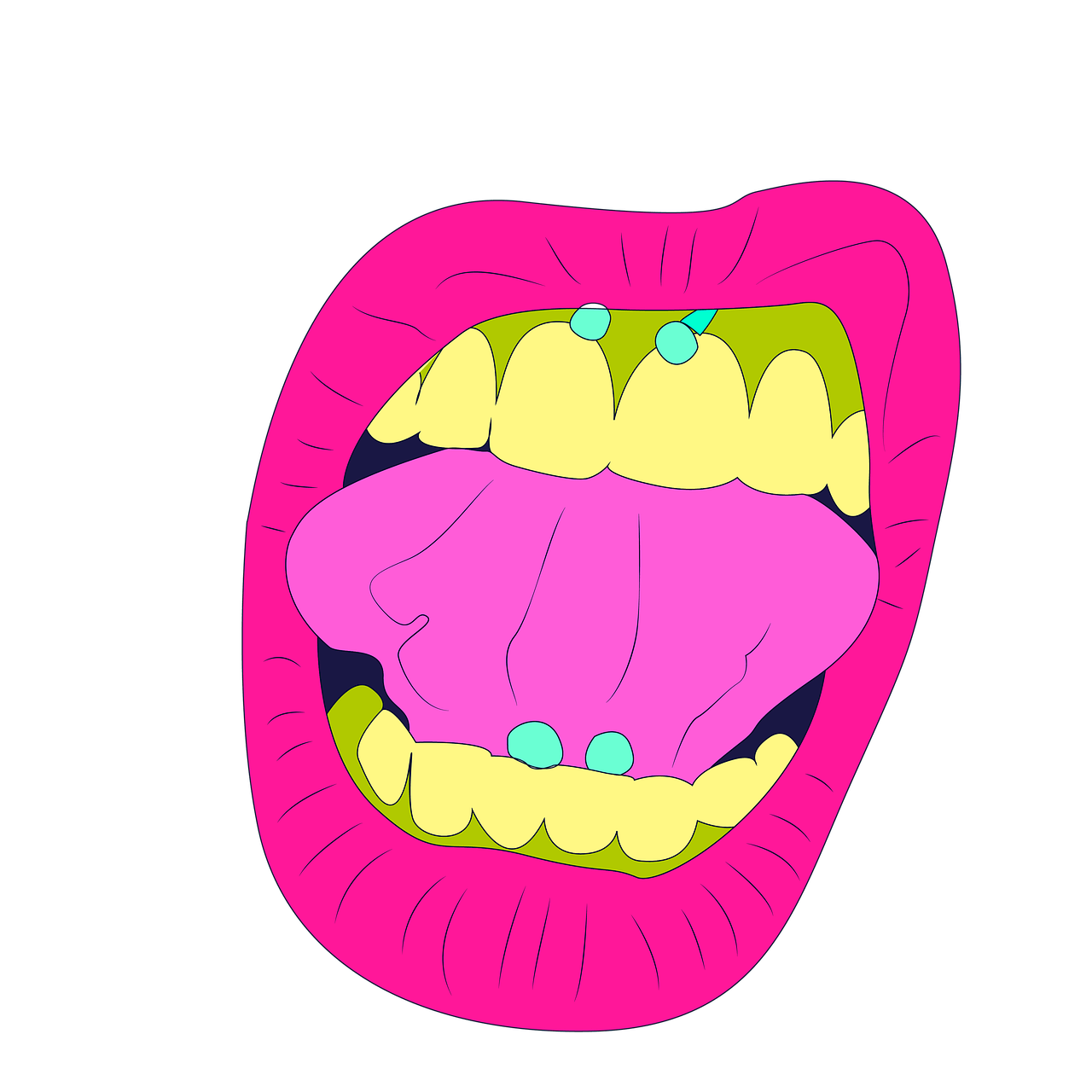Introduction
A. Brief Description of Snake Eyes Piercing
The Snake Eyes Piercing, also known as the venom tongue piercing, is a horizontal tongue piercing placed at the tip of the tongue, resembling a snake’s eyes. This unique piercing type is gaining popularity for its edgy and striking visual appeal. Unlike traditional tongue piercings that pierce vertically through the tongue, snake eyes piercings involve the insertion of a single straight barbell through the tongue’s tip, effectively giving the illusion of two separate piercings on the surface.
B. Background and Popularity
Although body piercing has been a part of human cultures for thousands of years, tongue piercings are relatively modern phenomena[1]. The Snake Eyes Piercing, in particular, has surged in popularity in recent years. Its unusual placement and provocative visual effect have made it a popular choice among individuals seeking unique and bold forms of self-expression[2]. Despite its recent popularity, it’s important to note that this piercing type may not be as widely accepted as more traditional forms of body art, such as ear or nose piercings. However, its popularity among body modification enthusiasts continues to grow[3].
The Procedure of Snake Eyes Piercing
A. Description of the Procedure
The Snake Eyes Piercing procedure begins with the professional piercer sterilizing the tongue and surrounding area. A clamp is used to hold the tongue in place, and the piercer marks the placement sites on the tip of the tongue with a surgical pen. Then, a hollow needle is used to create the piercing, passing horizontally through the tip of the tongue. After this, a straight barbell is inserted through the new piercing. The ball ends of the barbell sit on the surface of the tongue, creating the appearance of a snake’s eyes.
B. Required Tools and Materials
For a Snake Eyes Piercing, the piercer typically uses a hollow piercing needle, a straight barbell, a surgical pen, and a clamp. It’s crucial that all the tools used in the process are sterile to prevent infection. The barbell that’s used is generally made of hypoallergenic materials such as surgical stainless steel, titanium, or niobium to minimize the risk of an allergic reaction[4].
C. Duration and Considerations
The procedure itself is relatively quick, often completed within a few minutes. However, the healing process can take anywhere from four to eight weeks. It’s important to consider that the Snake Eyes Piercing restricts the movement of the tongue to some extent, which can impact speech and eating, especially in the first few days following the procedure[5]. Therefore, it’s advisable to have a thorough discussion with a professional piercer regarding the implications and possible complications of this particular piercing[6].
Potential Risks and Complications
A. Common Risks Associated with Snake Eyes Piercing
While any form of body modification comes with a certain level of risk, Snake Eyes Piercing poses unique potential complications due to its placement and type. Common risks include infection, bleeding, and nerve damage due to the piercing’s close proximity to the nerve endings in the tongue[7]. Other issues such as swelling, difficulties in speech, and challenges with oral hygiene can also arise.
Furthermore, there is also a risk of jewelry migration or rejection, where the body treats the jewelry as a foreign object and tries to push it out. This can lead to scarring and require the removal of the jewelry. It’s also worth noting that jewelry in the mouth can cause accidental biting or may contribute to tooth or gum damage.
B. Long-term Implications
In the long run, snake eyes piercing can potentially cause significant dental issues. Frequent contact between the barbell and teeth can lead to tooth chipping or cracking, enamel wear, and even tooth loss[8]. Additionally, damage to the gums can cause gum recession, leading to further oral health problems[9].
Chronic infection is also a potential long-term concern, and in rare cases, improperly done piercings can result in significant nerve damage, impacting taste and tongue movement[10].
C. What to Consider Before Getting a Snake Eyes Piercing
Before deciding on a Snake Eyes Piercing, it’s important to consider potential risks, both short-term and long-term. Ensuring the procedure is carried out by a professional piercer in a clean and sterile environment can help minimize potential complications.
Additionally, individuals should consider their personal lifestyle and habits, such as oral hygiene practices, diet, and frequency of alcohol or tobacco use, which can impact the healing process and long-term maintenance of the piercing. Finally, the potential for altered speech, difficulties in eating, and possible negative reactions (both personal and societal) should also be weighed.
Aftercare and Healing
A. The Healing Process: What to Expect
After getting a Snake Eyes Piercing, one can expect an initial phase of inflammation, which is a natural part of the body’s healing process. The tongue may swell, and some discomfort may be experienced. These symptoms usually subside after a week. The complete healing process, however, can take anywhere between 4 to 8 weeks.
During this period, it is common to experience some changes in taste or sensitivity on the tongue, which typically return to normal once the piercing has fully healed. It’s also common for a thin, white layer of skin to form around the piercing during the healing process – this is normal and not a sign of infection.
B. Aftercare Recommendations
Aftercare is critical to ensuring a safe and quick healing process. Some recommendations include:
- Rinse the mouth with a non-alcoholic mouthwash or saline solution after every meal and before bed.
- Avoid spicy, hot, or hard foods, alcohol, and smoking, which can irritate the piercing and slow down the healing process[11].
- Brush the teeth gently to avoid irritating the piercing, and use a new toothbrush to minimize the risk of introducing bacteria into the mouth.
- Avoid playing with the jewelry, as this can lead to trauma and delay healing[12].
C. Tips for Speeding up Healing
Apart from the recommended aftercare routine, other tips for speeding up the healing process include maintaining a healthy lifestyle – getting enough sleep, eating a balanced diet, and staying hydrated can all promote healing. Additionally, maintaining oral hygiene by brushing and flossing regularly and avoiding potential irritants can also help the healing process.
Frequently Asked Questions (FAQs) about Snake Eyes Piercing
A. Is Snake Eyes Piercing Painful?
Pain during Snake Eyes Piercing is subjective and varies from person to person. However, generally, the procedure is relatively quick and involves a slight pinch or sting. An experienced piercer will ensure the procedure is as comfortable as possible. Some discomfort can be expected in the initial days after the piercing, primarily due to swelling or inflammation[13].
B. How Long Does It Take to Heal?
The healing process for a Snake Eyes Piercing typically takes between 4 to 8 weeks. However, this may vary depending on an individual’s health, lifestyle, and how well they follow the aftercare instructions. It’s crucial to allow the piercing to heal fully before changing or removing the jewelry[14].
C. Can I Remove the Piercing After a While?
Yes, the jewelry from a Snake Eyes Piercing can be removed. However, it is strongly recommended to do so only after the piercing has fully healed, and ideally, under the guidance of a professional piercer to avoid causing trauma to the area. It’s worth noting that if the jewelry is removed for an extended period, the piercing may close up.
D. Does the Piercing Affect Eating or Speaking?
Initially, the Snake Eyes Piercing may affect speech and eating as the tongue adjusts to the new jewelry. There might be a lisp, and eating may feel unusual. However, these effects typically subside as the individual becomes accustomed to the piercing.
Snake Eyes Piercing: Individual Experiences and Insights
A. Personal Stories and Experiences
People’s experiences with Snake Eyes Piercing are quite diverse. Some find the process and the healing relatively smooth. For instance, a user on the BodyJewelleryShop Forum shares how they experienced minimal pain during the procedure and were able to adjust to the new piercing quickly. On the other hand, others recount more challenging experiences with pain, swelling, and difficulties with eating and speaking in the first few weeks. A user from Reddit details their experience with prolonged healing and complications despite following aftercare instructions.
B. Advantages and Disadvantages as Told by Those Who Have the Piercing
Among the advantages of Snake Eyes Piercing, many users mention the unique aesthetic appeal and the novelty factor[15]. For some, it serves as a form of personal expression. On the downside, complications such as gum damage, tooth chipping, and difficulty with speech and eating are often mentioned. Some users regretted the decision due to the long-term implications.
Conclusion
A. Summarizing the Allure of Snake Eyes Piercing
The allure of Snake Eyes Piercing lies predominantly in its unique and distinct aesthetic appeal. The unconventional placement on the tongue tip sets it apart from other forms of oral piercings. For many, this form of body modification acts as a powerful means of personal expression and can signify a form of rebellion or desire to stand out from the crowd[16].
B. Final Thoughts and Considerations
However, alongside its undeniable charm, it is crucial to consider the potential risks and complications associated with Snake Eyes Piercing. Prospective piercees must understand the importance of seeking professional service, adhering strictly to aftercare instructions, and being aware of possible long-term implications. A well-informed decision, taking into account both the allure and the potential drawbacks, is key to a satisfying Snake Eyes Piercing experience[17].










